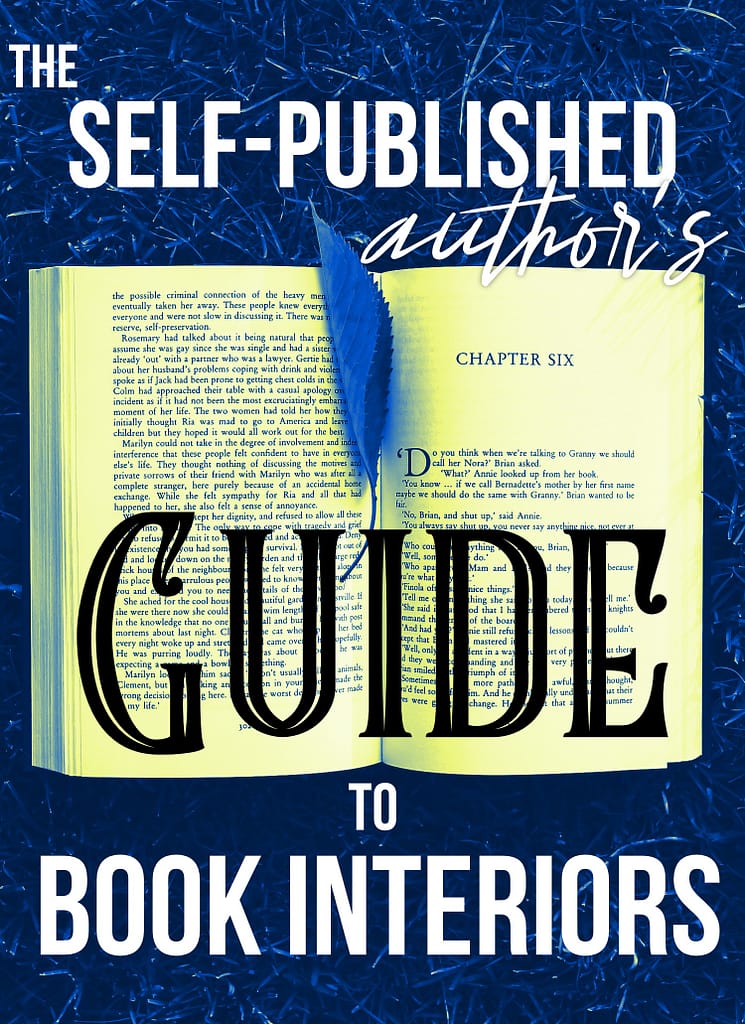The following is a guest post. Katie Duggan is a writer with Reedsy, a marketplace that connects authors and publishers with the world’s best editors, designers, and marketers. Katie is originally from New Jersey and currently completing a master’s degree in film studies in Cambridge, UK. When not working or studying, she enjoys watching movies and writing musicals.
“Don’t judge a book by its cover.”
It’s an adage heard so often that it’s become a cliché. But while everyone seems to have opinions about a book’s cover and the importance of beautiful book cover art… what about the inside? Maybe there’s another adage that’s more appropriate here: “It’s what’s on the inside that counts.” And that’s certainly true when it comes to quality book design!
That said, book design can feel somewhat overwhelming for an author who has already poured so much work into the writing and editing process. But design doesn’t have to be tricky if you know what to expect! It all comes down to three essential tasks:
Selecting the right interior typography
Typesetting the body text
Formatting the front and back matter
As a self-published author, it’s up to you to really invest in your book design so that it looks as professional as traditionally published books. By following some of the key tips below and finding the right tools and assistance, you can ensure that your book’s design visually reflects the masterpiece you’ve written!
Step 1: Selecting the Right Interior Typography
Typography covers the visual side of text on the page, from choosing typefaces and font sizes to figuring out the “role” of each different font within your book. As you design your book’s interior, you want to always think about how these elements interact, keeping readability at the forefront of your mind.
When selecting a typeface, first and foremost, pick one that’s easily legible — people cannot properly enjoy your book if they have difficulty reading the words on the page! You should also choose typefaces appropriate for the overall tone and aesthetic of your book, while keeping genre in standards in mind.
Most fiction genres tend to use a font size between 10 and 12 and favor serif typeface (classic choices include Garamond and Baskerville). For other genres, such as nonfiction reference books or textbooks, sans serif typefaces are often preferred, and fonts like Cansu or Modelica work well for punchy titles and headings. With children’s books, there’s a bit more room to experiment with distinctive text to suit the style of the book’s illustrations, so have fun!
After you’ve chosen the primary typeface for your text, you can also think about whether you’d like any special styles to make certain storytelling devices stand out, like text-message exchanges or handwritten notes. Whatever you ultimately choose, make sure it’s easy to read.
Step 2. Typesetting the body text
Typesetting is the process of arranging all the text on the page to reflect the book’s overall vision — ensuring the best possible reading experience.
A typesetter will tackle the margins and take care that your book follows industry standards for spacing and page numbering. A typesetting software can also assist with these, as well as help you with other formatting chores like left-justifying your margins and removing pesky “rags” (jagged edges of text) and “widows” or “orphans” (stray lines left over from previous pages or paragraphs).
If you’re inclined to give DIY typesetting a try, there are a number of free and paid programs to assist you! LaTeX is a free typesetting software that can work well for nonfiction and text-only works. The Reedsy Book Editor is another great free resource authors can use to typeset, format, and even write their manuscripts directly in the tool (and it’s especially helpful for formatting front and back matter, which we’ll get into below!)The word processor Scrivener, which requires purchasing a license, also offers basic book formatting tools.And for those with more intricate typesetting needs, paid programs like Adobe InDesign offer high-level design capabilities.If you’re not interested in wrangling these programs yourself, hiring a professional book interior designer can help you produce a book design that stands out with polish and panache. After all, you may have mastered the art of writing, but don’t be afraid to trust a designer who’s mastered their own craft to perfect the design.Step 3. Formatting the front and back matter
The front and back matter contain all the important bits of information that make your book appear “official” and professionally published. The front matter typically includes the title page and information on the author, publisher, and copyright details, along with a table of contents where appropriate. Depending on the type of book you’re writing, the front matter might also feature an epigraph or dedication, or perhaps a preface or foreword to introduce the work.The back matter comes after the main portion of the text and provides additional information to the reader. This might include an epilogue, afterword, or acknowledgments, while nonfiction might feature an index, bibliography, glossary of key terms or timeline of major events. The Reedsy Book Editor is particularly useful for nailing the formatting of these sections, as it lays out all the individual sections you might need and allows you to pick and choose among them.With that done, there you have it… your book is (mostly) finished! We’ve covered the key elements of book interior design, and you’re ready to tackle the rest of the publishing process. Now you have the basic tools you need to craft a book that best visually communicates your story, and that is as beautiful and pleasurable to read as it was to write.


